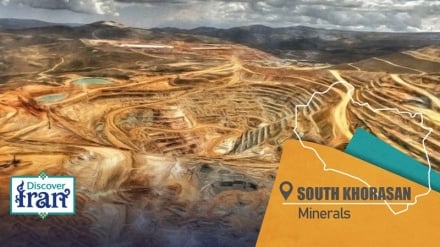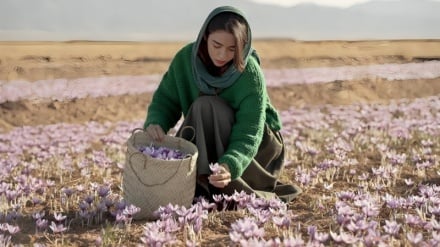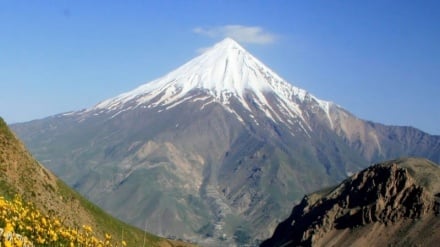Kafari Gorge: A hidden gem in Iran’s Zagros mountains
-
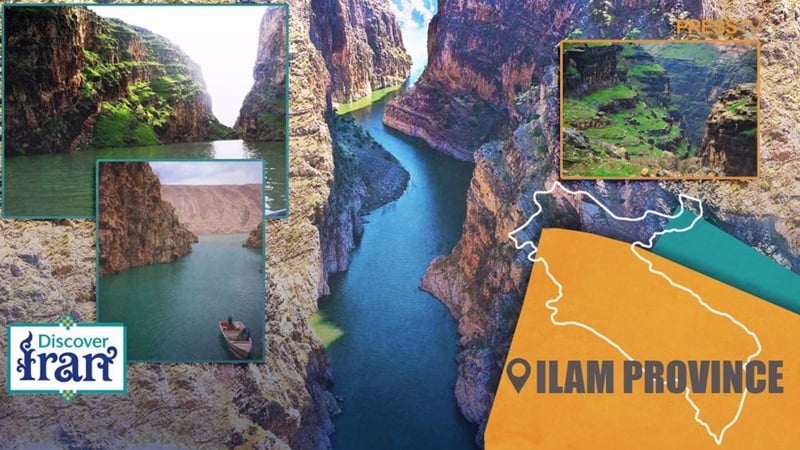
Kafari Gorge: A hidden gem in Iran’s Zagros mountains
Pars Today – Kafari Gorge, located in the west of Ilam Province, Iran, is one of the most captivating yet lesser-known areas of the region, boasting both natural beauty and ancient history.
Archaeological excavations around Kafari Gorge have uncovered relics from the Neolithic, Sassanid, and Iron Age periods, including arched gateways, plaster designs, column bases, and metal artifacts. According to Pars Today, citing Press TV, the gorge is surrounded by dense oak forests whose interlaced branches form a lush green canopy overhead, gently filtering sunlight down to the forest floor and sustaining a rare ecosystem of plants and wildlife.
Nestled within the rugged terrain of the western Zagros Mountains, the gorge is recognized as one of Iran’s natural wonders. Known as the “Bride of the Zagros,” it blends the raw beauty of nature with the cultural heritage of ancient civilizations.
The access route to Kafari Gorge begins in the city of Badreh, located 80 kilometers from Ilam and 38 kilometers from Dareh Shahr. The entrance lies north of Valiasr, reachable either via a rough mountain road or by boat across the Simareh Dam.
Carved by time and water
Kafari Gorge is framed by towering limestone walls and dense oak forests, with a river flowing through it from Kabir Kuh, one of the long mountain ranges of the Zagros. This river, known as the Simareh, is the main tributary of the Karkheh River and, over thousands of years, has carved the gorge’s deep and winding passage. The Simareh’s muddy currents have shaped both the geography and the human history of the region.
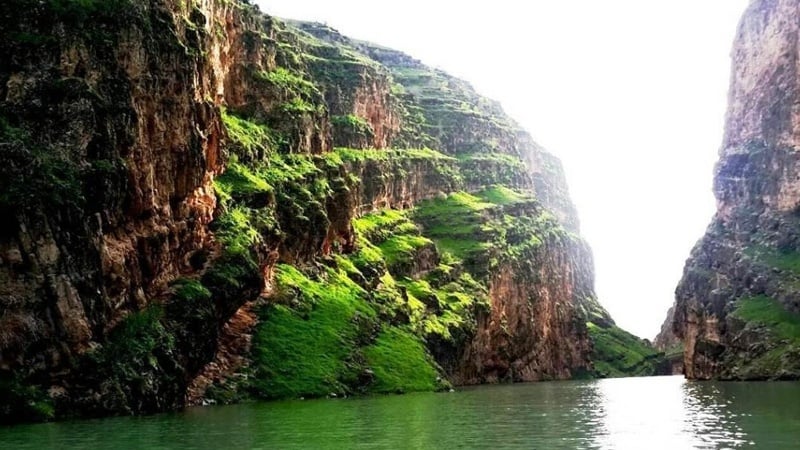
Archaeological studies indicate that humans have inhabited the area for at least 3,000 years BCE. Excavations have uncovered relics from the Neolithic, Sassanid, and Iron Age periods, including arched gateways, plaster designs, column bases, and metal artifacts.
The structures within Kafari Gorge (also called Shadad) have a distinctive construction style, featuring neatly arranged stonework and Early Bronze Age pottery—offering a glimpse into possible settlement in this remote mountain region. More recently, the receding waters of the Simareh Dam have revealed a significant architectural structure dating back to the Sassanid period.
The living forest of the Zagros
Another remarkable feature of Kafari Gorge is its vibrant, living ecosystem. Dense oak forests form a green canopy overhead, gently filtering sunlight down to the forest floor and sheltering a habitat rich in rare plant and animal species.
The Persian squirrel, a small, reddish creature, is one of the forest’s residents. In spring, mother squirrels leading their young create a lively and heartwarming scene amid the gorge’s natural beauty. This largely untouched forest is one of the most diverse and biologically rich habitats in Iran. The serenity of nature here is broken only by the rustling of leaves or the playful leap of squirrels from branch to branch, adding to the charm of the landscape.
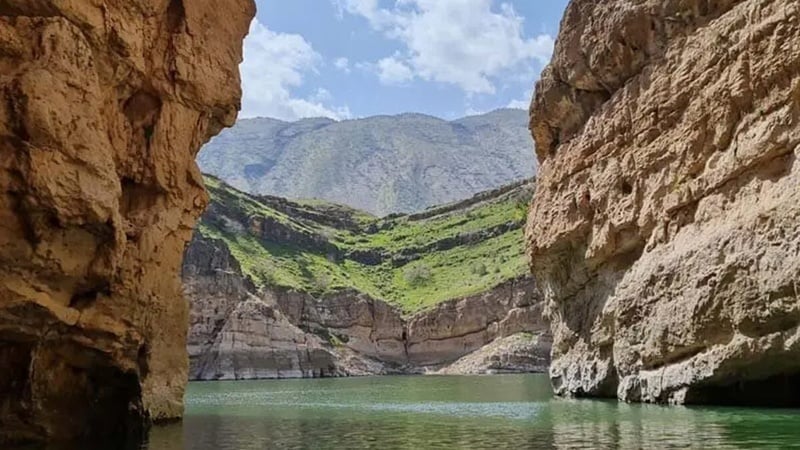
Echoes of ancient faith and architecture
In addition to its natural and archaeological significance, the area is home to several religious and architectural landmarks. Near the gorge lies the Kolm Fire Temple, an ancient Zoroastrian structure nestled between two verdant mountains along the Kolm River, which is registered as a national heritage site.
Further upstream is the Shadad Cave, another reminder of the region’s Sassanid heritage. Although part of the cave has been submerged due to rising water levels, it still contains important cultural remains, indicating its use as a shelter, a sacred site, or a place of worship.
Seasonal and regional beauty
Like most mountainous areas of Ilam, Kafari Gorge offers sharply contrasting seasons. While autumn and winter cloak the gorge in mist and cold, the most beautiful time to visit is in spring, when oak trees blossom, wildflowers blanket the plains, and the river’s water level is perfect for tourism.
Nearby gorges, such as Raziyaneh Gorge and Almas Gorge in the Badreh region, make this area an ideal destination for nature enthusiasts, geologists, and environmentalists.
In an era of rapid urbanization and increasing environmental degradation, Kafari Gorge stands as an example of untouched beauty, deep cultural roots, and lesser-known heritage. Far from cities and mainstream tourist routes, it offers a truly authentic and unspoiled encounter with the geological and historical soul of Iran.
Whether gliding quietly by boat between the gorge’s towering walls or hiking along oak-lined trails, visitors find themselves in a place where stone, water, and time are locked in an eternal dialogue.
Kafari Gorge, a majestic canyon in western Ilam, Iran, is rich in ecology, history, and architecture—offering a rare and exceptional escape into nature.
MG
